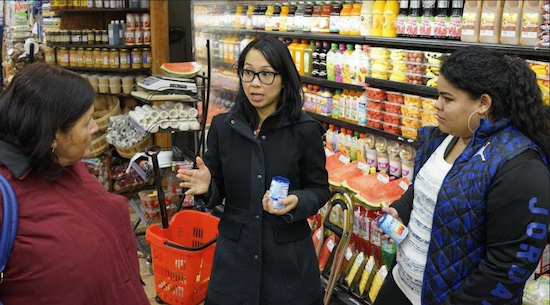NYU Langone doctor takes patients grocery shopping to promote healthy eating
New program shows diabetics how to eat better

Dr. Mary Kristine Ellis (center) turned a grocery store into a doctor’s office one recent afternoon to explain to patients on how to make healthier food choices. Photo courtesy of NYU Langone Hospital – Brooklyn
A kind doctor is one who is said to have a good bedside manner. But Dr. Mary Kristine Ellis is different. She shows her compassion for her patients by taking them to the grocery store.
Ellis, a family medicine physician at NYU Langone Hospital – Brooklyn, recently led patients on a food shopping excursion to a neighborhood grocery store to show them the best foods to buy if they want to get healthy and stay that way.
Many of the patients who agreed to show Ellis the contents of their grocery carts are diabetics or have been told by their doctors that they have pre-diabetic conditions.
